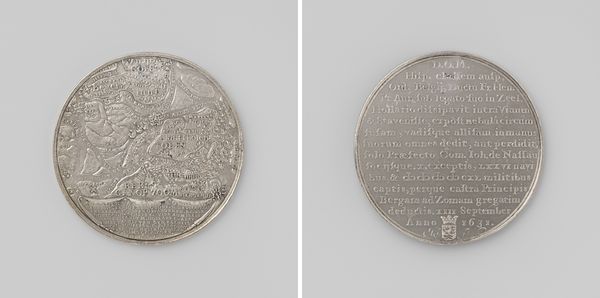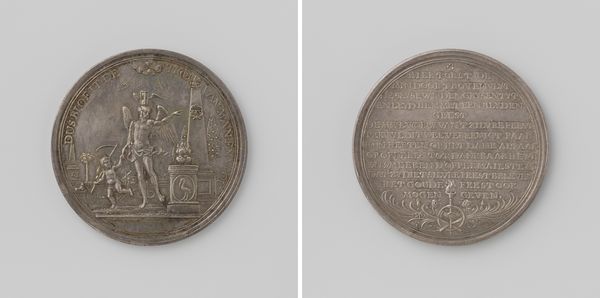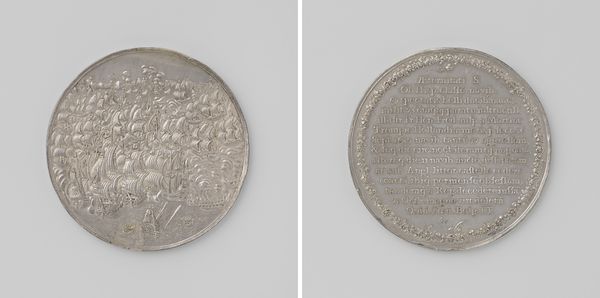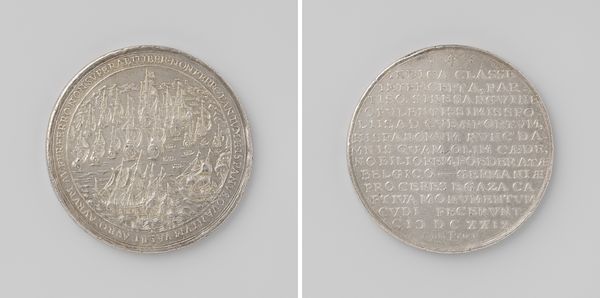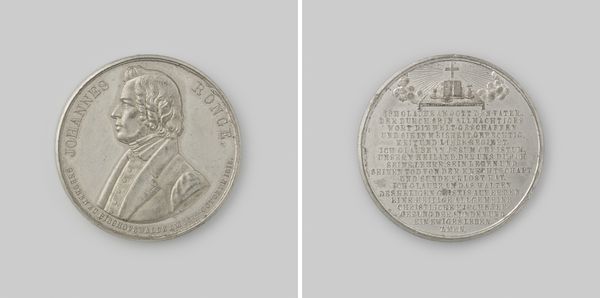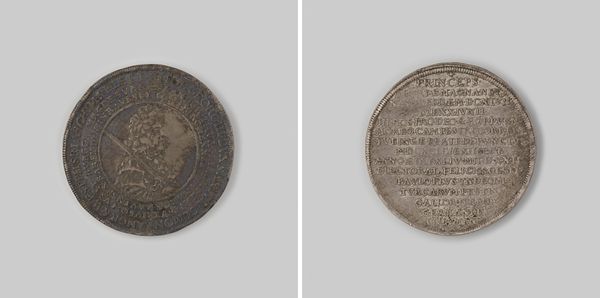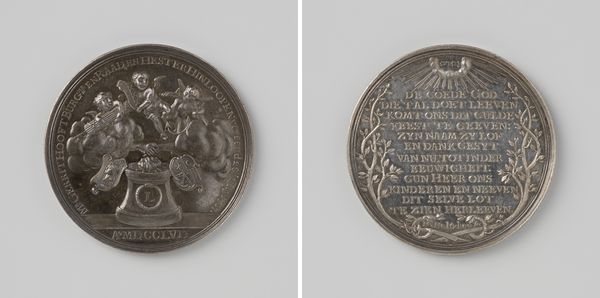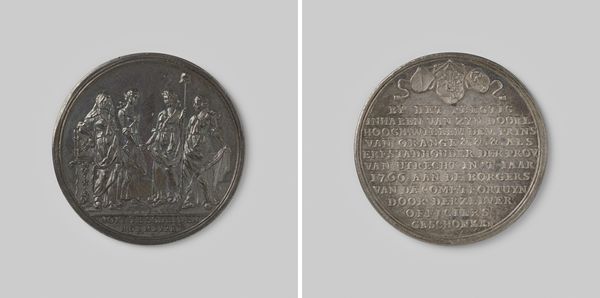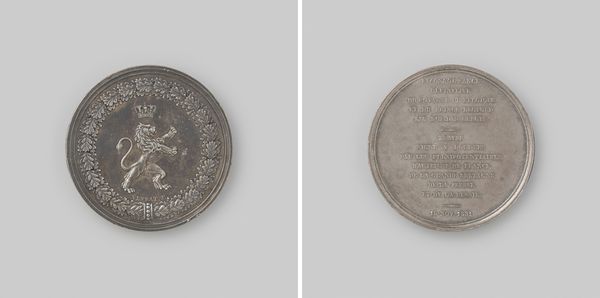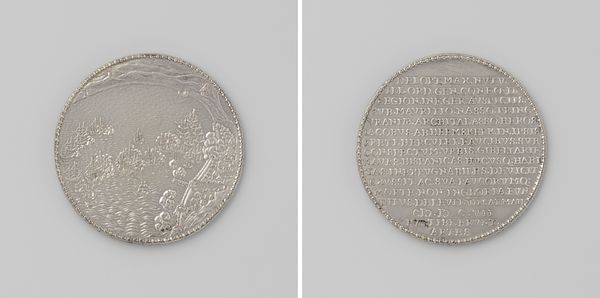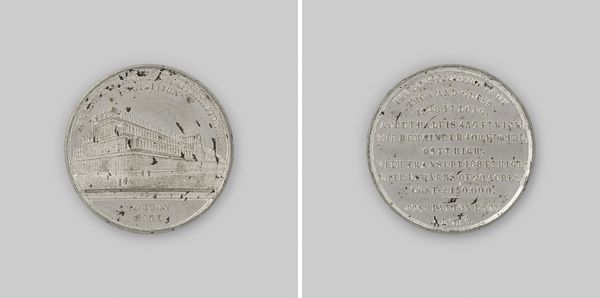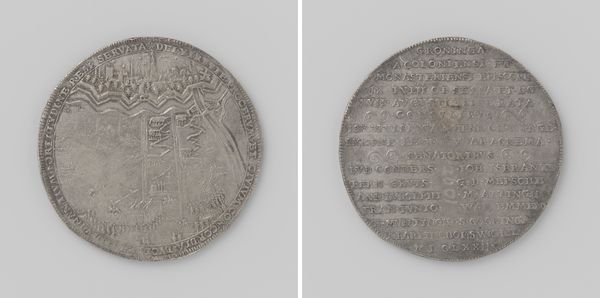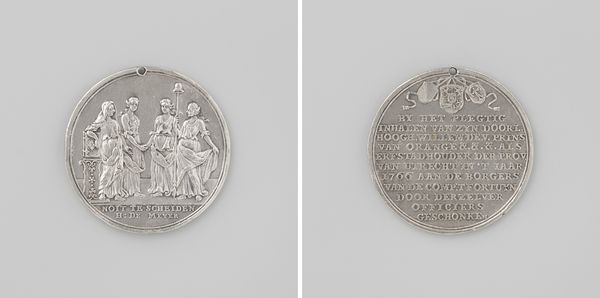
De Staten van het Kwartier van Nijmegen plechtig ingehuldigd in het Hooge bewind van het graafschap Kuilenburg, penning vereerd aan de afgevaardigde 1720
0:00
0:00
metal, relief, engraving
#
portrait
#
baroque
#
metal
#
relief
#
engraving
Dimensions: diameter 8.6 cm, weight 166.68 gr
Copyright: Rijks Museum: Open Domain
Editor: This is a medal from 1720 by an anonymous artist. It's made of metal, with engraved relief details. The two sides give a contrasting impression—one showing a heraldic crest, and the other is filled with densely packed text. What do you see in this piece? Curator: For me, the medal is all about remembering and cementing power through symbols. The heraldic imagery speaks volumes. We see lions, a crown, and complex shields—these aren't just decorative, they're deliberate markers of authority and lineage. Notice how heraldry is a visual language designed to instantly communicate status. Editor: That makes sense. So the imagery on one side and the text on the other… what does it all signify? Curator: It commemorates an inauguration within the region of Nijmegen under the County of Culemborg. The sheer volume of text tells us these names and events needed to be recorded, almost as a form of validation and historical legacy. Ask yourself, why list these names for posterity? What function do they serve beyond mere record-keeping? It speaks to a desire to legitimize power and commemorate those who participated in the event. Editor: So, it's less about personal artistic expression and more about establishing a historical record through symbols. Curator: Precisely! It shows how objects, even medals, become powerful tools in constructing collective memory and reinforcing cultural continuity, reflecting a world preoccupied with lineage, power, and commemoration. Editor: I never thought of medals as more than just decorative objects, but now I understand how rich they are in cultural and political symbolism. Thanks! Curator: My pleasure. The layering of imagery and text invites endless exploration!
Comments
No comments
Be the first to comment and join the conversation on the ultimate creative platform.
